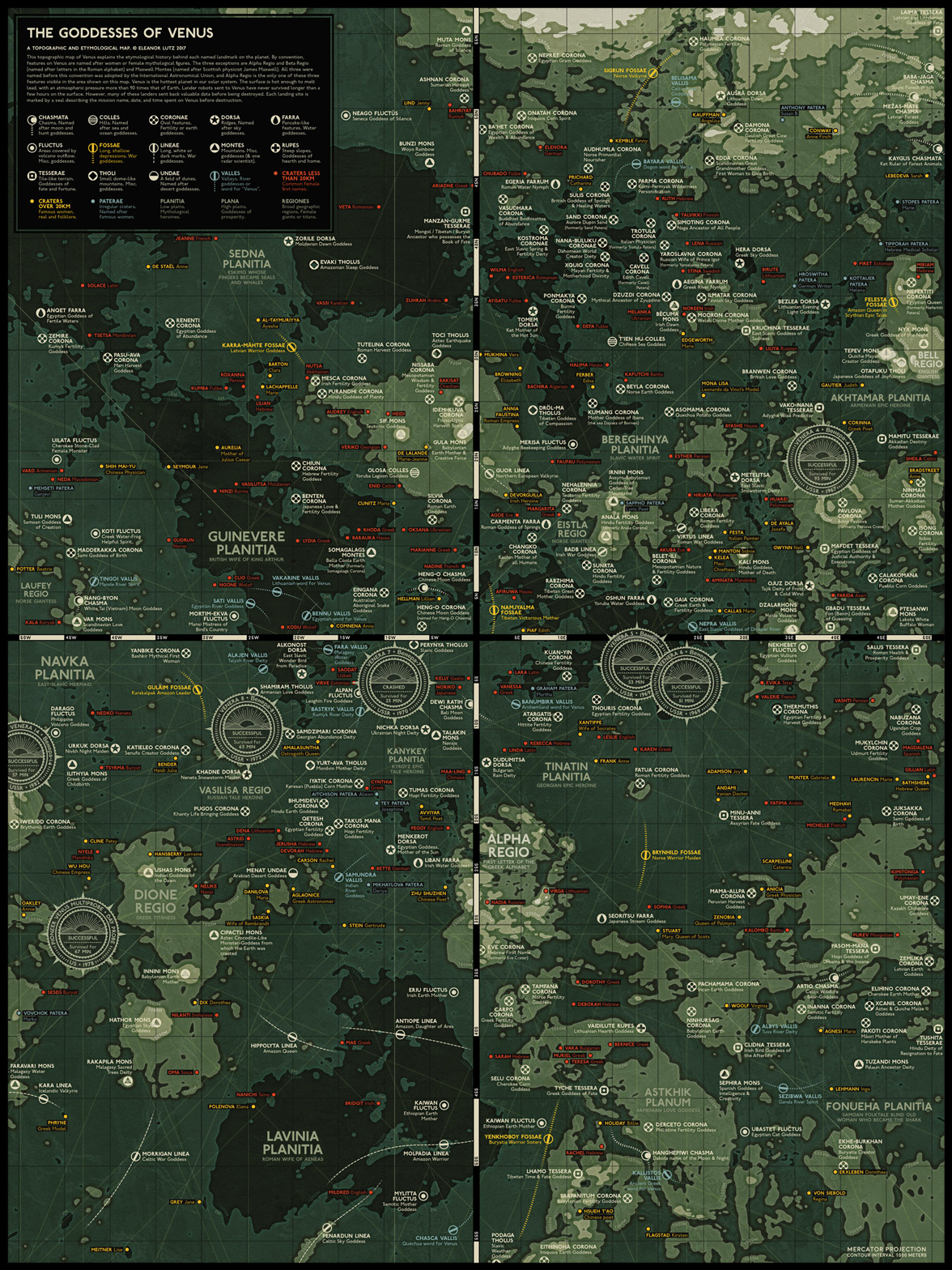The Goddesses of Venus: A topographic map
Almost exactly a year ago I published the Medieval Map of Mars - a topographic map of Mars that shows the etymology of each named feature. This year I decided to continue the series by making a map of Venus that explains the etymological origin of each landmark.
Features on Venus are named after women or female mythological figures. The three exceptions are Alpha Regio and Beta Regio (named after letters in the alphabet) and Maxwell Montes (named after the Scottish physicist James Maxwell). All three were named before this convention was adopted by the International Astronomical Union, and Alpha Regio is the only one visible in the area covered by this map.
![]() Sketching ideas for icons while waiting for the bus. I tried to pick symbols that had some meaning - a droplet for water goddesses, dice for goddesses of fate and luck, and four dividing cells for fertility goddesses.
Sketching ideas for icons while waiting for the bus. I tried to pick symbols that had some meaning - a droplet for water goddesses, dice for goddesses of fate and luck, and four dividing cells for fertility goddesses.
One of my favorite things about extraterrestrial maps is the international mix of assigned names. The International Astronomical Union clearly makes an effort to represent many diverse cultures when naming planetary features. I thought the ancient goddesses were particularly interesting because they hinted at what might have been important to each culture - like the Philippine volcano goddess Darago and Adyghe beekeeping goddess Merisa. Large craters are named after famous women, and I was happy to see a lot of names I recognized (Beatrix Potter, Rachel Carson, Virginia Woolf).
Venus is the hottest planet in our solar system. The surface is hot enough to melt lead, with an atmospheric pressure more than 90 times that of Earth. Lander robots sent to Venus have never survived longer than a few hours on the surface. However, many of these landers sent back valuable data before being destroyed. Each landing site is marked by a seal describing the mission name, date, and time spent on the surface before destruction.
-
Sources
- Thank you to James Skinner, Research Geologist at the USGS Astrogeology Science Center, for his help in locating relevant USGS maps.
- Topography and Etymology References: Venus 1:5 million-scale Magellan Imagery, USGS and IAU Gazetteer of Planetary Nomenclature. Venus Nomenclature search function, USGS and IAU Gazetteer of Planetary Nomenclature. Altimetric Radar Image Map of Venus (1997, USGS Series #I-2444) and Topographic Map of Venus (1997, USGS Series #I-2444).
- Spacecraft Information: Venera 4, Venera 5, Venera 6, Venera 7, Venera 8, Venera 14 Descent Craft, and the Pioneer Venus Day Probe.
- Fonts and Artwork: P22 Johnston Underground and P22 Johnston Underground Bold, originally designed for the London Underground by Edward Johnston. Moon Bold by Jack Harvatt. Sunrise symbol (1908).

© This work is shared under a Creative Commons Attribution-NonCommercial-NoDerivatives 4.0 International License.